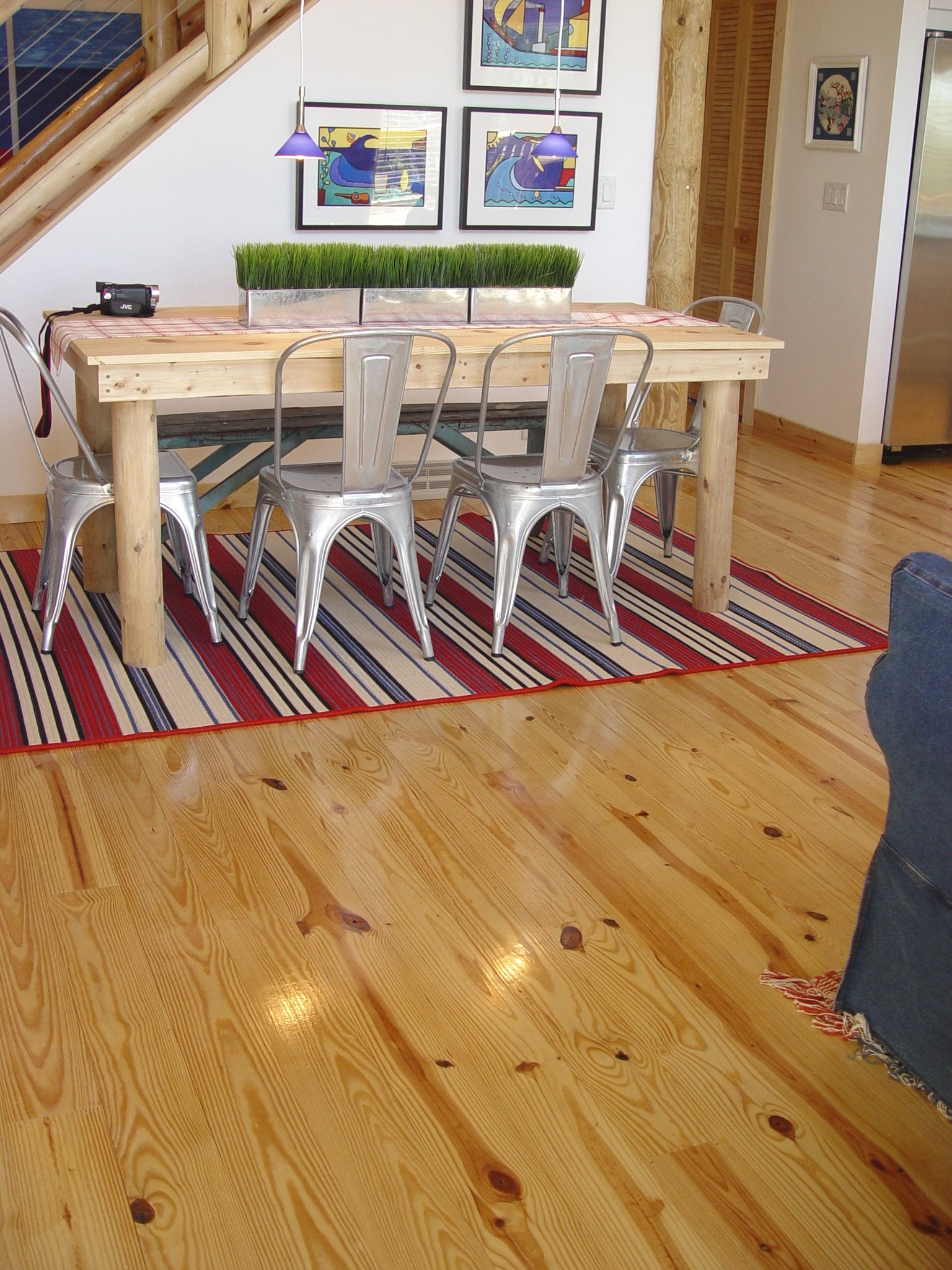Any investment in wood flooring can be justified when the material selected provides long-term wear resistance, general utility, and a decorative appearance. That’s where Southern Pine flooring comes in.
Three primary surfaces create the boundaries of every room: the walls, ceiling, and floor. Of the three, the floor is subjected to the most persistent wear that includes, but is not limited to, friction from footsteps, the movement of furniture, and the weight and use of appliances and other equipment.
Choosing a flooring material, therefore, requires proper knowledge of the material and its performance characteristics. A long service life depends on a complete understanding of installation, finishing, and maintenance requirements, too.
Properly installed and cared for, high-quality Southern Pine flooring products meet the challenges of the most demanding applications. For centuries, Southern Pine floors have proven to be extremely durable, serviceable, and attractive options for homes and all sorts of other structures including schools, churches, sports venues, and commercial buildings.
Dramatic improvements in seasoning Southern Pine flooring material, as well as refined manufacturing and machining processes, have been combined to ensure a smooth, stable floor surface. With its distinctive grain pattern, the golden beauty of a Southern Pine floor is a feature well known to, and often preferred by, designers, builders, and homeowners.
Southern Pine Flooring Sizes, Patterns
The most common thicknesses of Southern Pine flooring are 1-inch and 1x-inch nominal (3/4-inch and 1-inch actual). Standard widths range from 2-inch nominal (1-1/8 actual) to 6-inch nominal (5-1/8 actual), though wider widths are also manufactured. Strip flooring is a term given to material that is 3x-inch or narrower and plank flooring is classified as material that is 4 inches and wider.
Southern Pine flooring is available in lengths ranging from 8 to 16 feet, and longer or custom lengths may be available on a special-order basis. Finger-jointing is increasingly used to produce longer lengths, making more efficient use of high-grade stock. If not otherwise specified, Southern Pine flooring will have tongue-and-groove edges with plain ends.
There are three main grain specifications:
- End-matched flooring. End-matched floorboards have a tongue or a groove on each end. This tongue-and-groove pattern on the strip flooring sides and ends provides load-bearing capabilities for screed (the subflooring nailing base) installation systems where end joints occur between the screeds. End-matching also reduces the amount of strip end cuts in comparison to plain-end flooring, which can reduce waste and labor. As a log is sawn, its position relative to the saw cut determines the wood grain’s orientation relative to the flooring wear surface.
- Flat or mixed grain flooring: Commonly referred to as flat-sawn flooring, this specification has a growth ring configuration parallel to the wearing surface, but it generally is graded and sorted respective of the wood grain orientation and consequently is considered mixed grain flooring.
- Edge or vertical grain flooring. This is where the growth rings are perpendicular to the flooring wear surface. This product is equivalent to quarter-sawn material in hardwood flooring. Edge-grain flooring has a harder wearing surface than flatgrain material and is desirable for high-traffic areas such as kitchens, hallways, or family rooms. Edge-grain material’s resistance to wear and indentations also makes it popular for commercial or institutional use at offices, schools, retail, or industrial environments.
Typically, Southern Pine flooring is manufactured with a stress-relief pattern on the underside of each piece to minimize the effects of moisture-related dimensional changes. Relief types include a shallow, wide groove known as a hollow back, or a series of grooves commonly referred to as scratch-back.
Key Takeaways
Before picking your Southern Pine flooring materials, consult a knowledgeable dealer who can describe flooring grades and patterns, as well as provide samples.
Want to learn more about Southern Pine flooring? Visit our Lumber Library by clicking here or check out our Southern Pine Flooring guide by clicking here to read more about:
- Size and patterns
- Water relationship
- Storage and handling
- Jobsite acclimation
- Moisture barriers
- Subfloors over concrete
- Subfloors over wood joists
- Strip flooring
- Plank flooring
- Radiant-heated flooring
- Finishing (sanding, stains, and sealers
